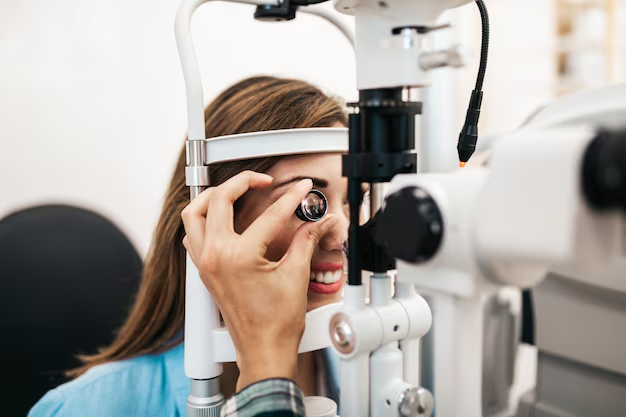Understanding Cataracts: Does Everyone Develop This Common Eye Condition?
Cataracts are often described as a natural part of aging, yet many wonder, "Does everyone get cataracts?" To unravel this question, we dive deep into what cataracts are, why they occur, and explore the various facets surrounding this common eye condition. By the end of this exploration, you'll have a clear understanding of the factors involved and steps to potentially prevent or manage cataracts effectively.
🎯 What Are Cataracts?
Cataracts occur when the lens of the eye becomes cloudy, affecting vision. They develop slowly and can impact everyday activities like reading or driving. While cataracts are most often associated with aging, understanding their root causes can provide insight into whether they are inevitable for everyone.
Anatomy of Cataracts
The eye's lens is crucial for focusing light onto the retina, which allows us to see clearly. As cataracts form, they scatter light and make it difficult for clear images to form, leading to blurred vision. These changes occur gradually and are often not noticed until vision is significantly impaired.
Symptoms to Watch For
- Blurry Vision: The most common symptom, making it hard to read or recognize faces.
- Faded Colors: Colors may appear less vibrant or dimmer.
- Glare: Lights may seem overly bright or develop a halo effect.
- Low Night Vision: Difficulty seeing at night is common.
- Frequent Changes in Prescription Glasses or Contact Lenses: A clue that cataracts may be developing.
🎨 Who Is More Prone to Develop Cataracts?
While aging is the most commonly cited factor, not everyone gets cataracts to the same degree. Several lifestyle and genetic factors come into play.
Age: The Primary Factor
Most cataracts are age-related and develop after age 40, with a higher prevalence seen in seniors above 60. As the proteins in the eye lens begin to clump, clouding starts, affecting vision over time.
Genetics and Family History
A family history of cataracts can increase the likelihood of developing them. If parents or siblings have cataracts, there may be a hereditary component to consider.
Lifestyle and Environmental Influences
- Smoking: Increases the risk due to the oxidative stress it places on the eyes.
- Excessive Alcohol Use: Similar to smoking, can contribute to the formation of cataracts.
- Prolonged Sun Exposure: Ultraviolet light from the sun can hasten cataract development; wearing sunglasses can mitigate this risk.
Medical Conditions
Certain health conditions, such as diabetes, and medications, particularly long-term steroid use, can increase the risk of cataracts.
🕵️♂️ Can Cataracts Be Prevented?
While aging is an inevitable process, are cataracts? Though no method guarantees prevention, several lifestyle adjustments can potentially delay their onset.
Embracing a Healthy Lifestyle
- Balanced Diet: Rich in antioxidants like vitamins C and E may support eye health.
- Regular Eye Exams: Essential for early detection and monitoring of eye health.
- Protective Eyewear: Wearing sunglasses that block UV rays.
Vision Health Supplements
Some choose dietary supplements aimed at eye health. While these are not cure-alls, they may offer some support, particularly as part of an overall healthy lifestyle.
🧠 Cataract Treatment Options
Not all cataracts require immediate treatment. The decision to undergo surgery often depends on the severity of vision impairment and its impact on daily life.
Cataract Surgery
Cataract surgery is one of the most common and effective procedures performed today. During the surgery, the cloudy lens is removed and replaced with an artificial one.
Key Points About Cataract Surgery
- Outpatient Procedure: Typically completed in under an hour.
- Recovery Time: Most people resume normal activities within a few days.
- Enhanced Vision: Many experience significantly improved vision post-surgery.
Non-Surgical Management
Before deciding on surgery, some may explore prescription glasses or contacts to manage vision changes. This approach is often suitable for those where cataracts are still minor.
👀 FAQs About Cataracts
Here are some commonly asked questions to enhance your understanding:
Do Cataracts Only Affect the Elderly?
While age is a primary factor, cataracts can develop at any age due to genetics, injury, or other health conditions.
Can Cataracts Come Back After Surgery?
Once the lens is removed during surgery, cataracts cannot return. However, some may experience posterior capsule opacification (PCO), often treated with a simple laser procedure.
Is There a Way to Reverse Cataracts?
Currently, no non-surgical methods are proven to reverse cataracts. Surgery remains the most effective treatment.
📊 Quick Reference Guide: Cataracts at a Glance
Here's a handy table summarizing key points about cataracts:
| Aspect | Details |
|---|---|
| Common Symptoms | Blurry vision, faded colors, glare, poor night vision |
| Primary Risk Factors | Aging, smoking, sun exposure, family history, diabetes |
| Preventive Measures | Healthy diet, protective eyewear, regular eye exams |
| Treatment Options | Cataract surgery, prescription eyewear for mild cases |
| Surgery Details | Outpatient, quick recovery, high success rate |
| Post-Surgery Expectation | Clearer vision, potential need for glasses/contacts adjustment |
🌟 Taking Control of Your Eye Health
Understanding that cataracts are a common part of aging can empower you to take proactive steps. Regular eye check-ups, a healthy lifestyle, and early recognition of symptoms play a crucial role in eye health management.
While not every person will develop cataracts, many will face them at some point. Staying informed and prepared ensures that decisions about eye care, including surgical interventions if necessary, are made confidently. Your vision is a vital part of life—taking steps to maintain it ensures a clearer view of the years ahead.
